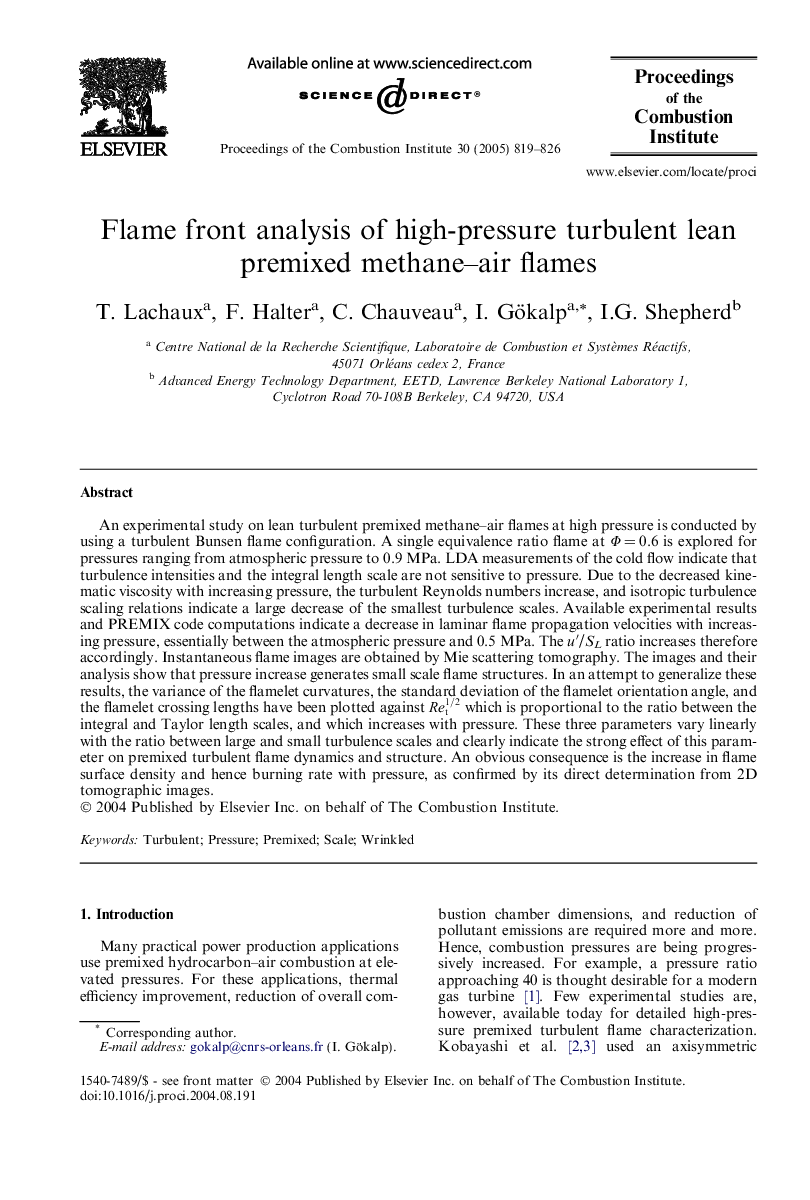| Article ID | Journal | Published Year | Pages | File Type |
|---|---|---|---|---|
| 9637407 | Proceedings of the Combustion Institute | 2005 | 8 Pages |
Abstract
An experimental study on lean turbulent premixed methane-air flames at high pressure is conducted by using a turbulent Bunsen flame configuration. A single equivalence ratio flame at Φ = 0.6 is explored for pressures ranging from atmospheric pressure to 0.9 MPa. LDA measurements of the cold flow indicate that turbulence intensities and the integral length scale are not sensitive to pressure. Due to the decreased kinematic viscosity with increasing pressure, the turbulent Reynolds numbers increase, and isotropic turbulence scaling relations indicate a large decrease of the smallest turbulence scales. Available experimental results and PREMIX code computations indicate a decrease in laminar flame propagation velocities with increasing pressure, essentially between the atmospheric pressure and 0.5 MPa. The uâ²/SL ratio increases therefore accordingly. Instantaneous flame images are obtained by Mie scattering tomography. The images and their analysis show that pressure increase generates small scale flame structures. In an attempt to generalize these results, the variance of the flamelet curvatures, the standard deviation of the flamelet orientation angle, and the flamelet crossing lengths have been plotted against Ret1/2 which is proportional to the ratio between the integral and Taylor length scales, and which increases with pressure. These three parameters vary linearly with the ratio between large and small turbulence scales and clearly indicate the strong effect of this parameter on premixed turbulent flame dynamics and structure. An obvious consequence is the increase in flame surface density and hence burning rate with pressure, as confirmed by its direct determination from 2D tomographic images.
Related Topics
Physical Sciences and Engineering
Chemical Engineering
Chemical Engineering (General)
Authors
T. Lachaux, F. Halter, C. Chauveau, I. Gökalp, I.G. Shepherd,
